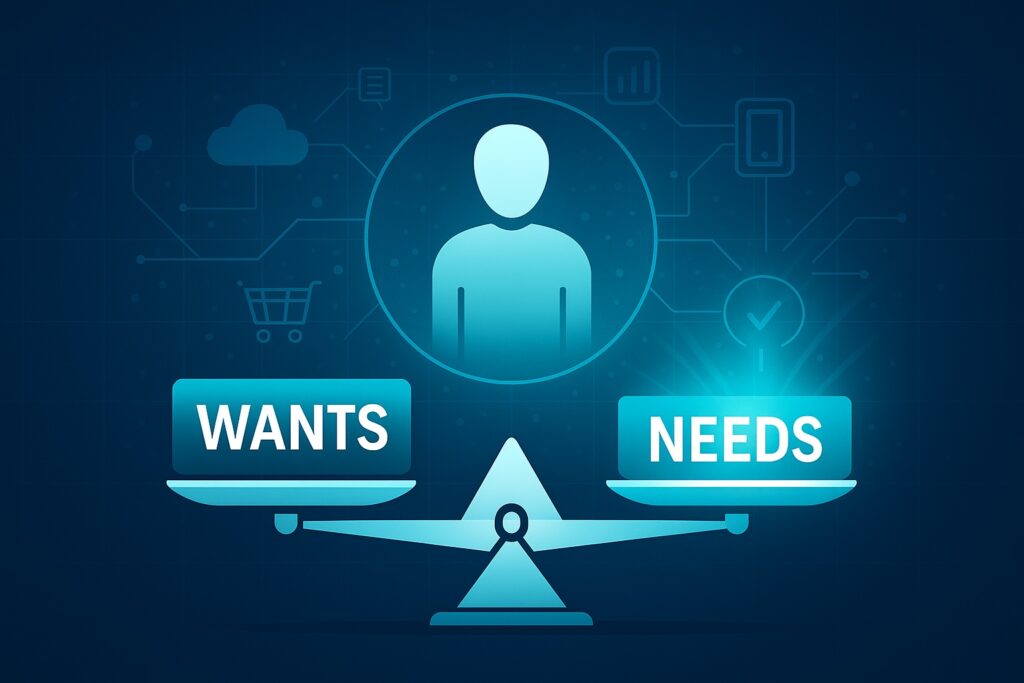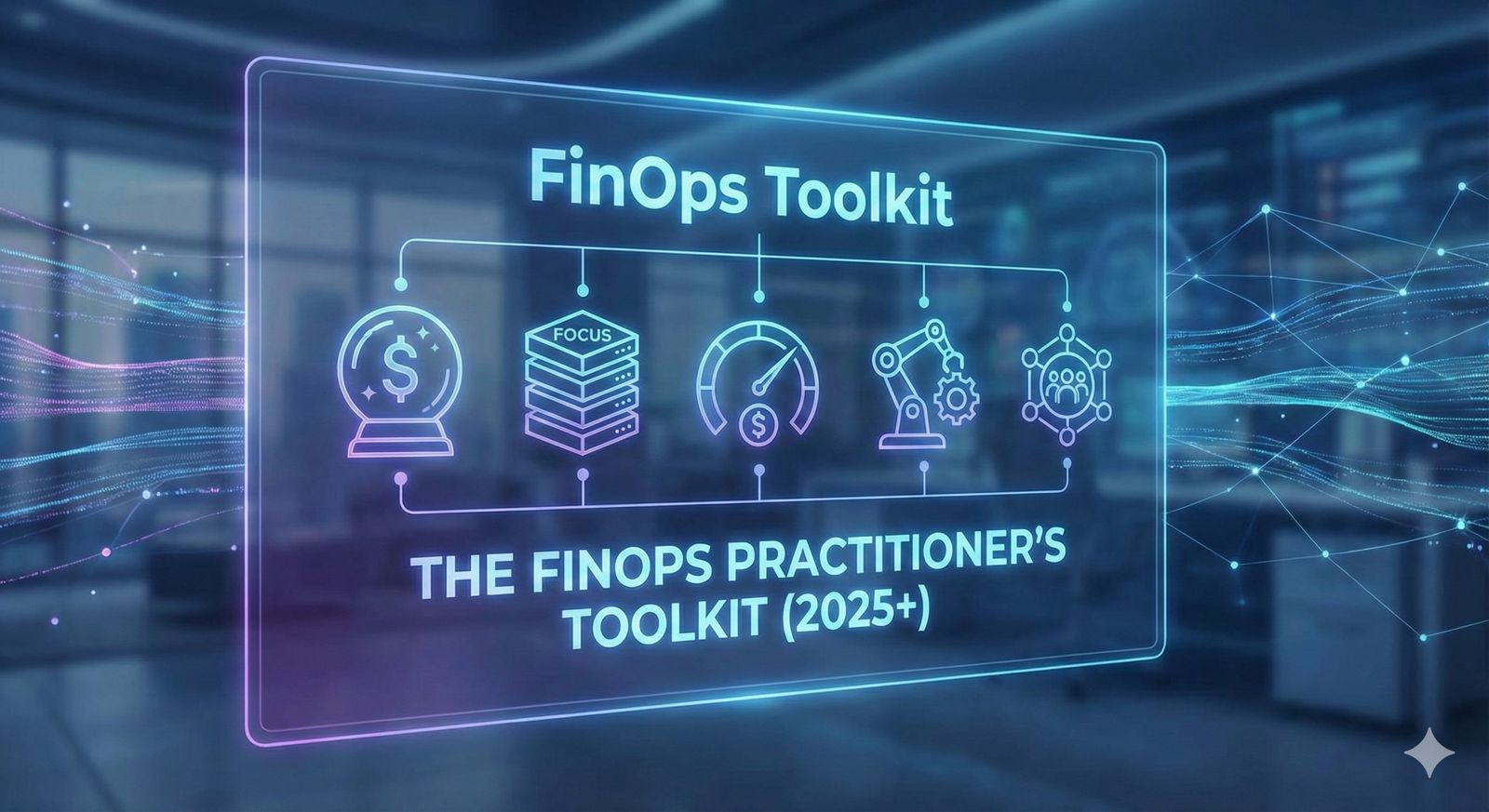Step 2 of Digital transformation
Digital transformation is often described as “moving to the cloud” or “adopting digital tools.” But those are just enablers. The real question is: Are we transforming in a way that matters to customers?
Customer-centric design means putting the customer at the heart of transformation, not just by meeting their wants, but by deeply understanding their needs, solving their pain points, and continuously refining the experience. This isn’t about creating shinier products; it’s about building processes and systems that adapt to customers in meaningful ways.
Wants vs. Needs: A Crucial Distinction
A common mistake organisation makes is designing around; customer wants instead of customer needs.
Wants are what customers say they want, faster features, lower prices, more variety.
Needs are the underlying problems customers are trying to solve, convenience, better turnaround times, trust, reliability, or outcomes.
The danger of confusing the two is that you end up investing in superficial features that don’t actually improve the customer experience or strengthen loyalty.
Case Study: When Free Became Costly
Consider this real-world scenario:
An organisation sold a core product alongside an ancillary service, a valuable add-on that customers could purchase separately. This add-on differentiated them from competitors. To attract more customers, leadership decided to offer this ancillary service for free.
The outcome? Instead of boosting sales, overall revenue declined.
Why? Because:
The ancillary product was no longer seen as a premium differentiator.
Customers perceived the overall offering as less valuable, since what was once exclusive became commoditised.
The company had designed for a want (“give us more for less”) rather than the real need (a trusted, value-rich core offering).
The lesson: Customer-centricity isn’t about giving customers everything they want. It’s about discerning their true needs and delivering value around them.
Customer-Centricity as a Process, Not a Product
Many organisations treat “customer-centric” as a feature checklist: add more services, add more channels, lower costs. But true customer-centric design is not a product; it’s a process.
Why it’s a process:
- Needs evolve – what customers value today may change tomorrow
- Digital ecosystems shift – competitors, platforms, and technologies disrupt expectations.
- Experiences are continuous – customers judge you not on isolated features but on end-to-end interactions.
A customer-centric process involves:
- Mapping customer journeys – Identify every touchpoint and where friction exists.
- Listening actively – Use analytics, surveys, and direct conversations to uncover needs.
- Iterating relentlessly – Test small changes, measure feedback, refine again.
- Empowering teams – Give cross-functional teams authority to solve customer problems, not just deliver features.
Examples of Customer-Centric Design in Action
Netflix: Designing for Needs, Not Wants
If Netflix listened only to customer wants, it might have stuck with DVDs longer because people said they still wanted physical rentals. Instead, it focused on the need: convenient access to entertainment anytime, anywhere. Streaming solved that need, even if customers hadn’t articulated it yet.
Amazon: Process Over Product
Amazon’s obsession with “customer obsession” isn’t about giving customers every request. Instead, it designs processes like 1-click ordering, Prime delivery, and easy returns. These aren’t “products” they’re processes that consistently remove friction.
Pitfalls to Avoid in Customer-Centric Design
- Over-Indexing on Wants – Giving freebies or chasing every customer request.
- Equating Customer-Centric with Low Cost – Competing on price alone erodes long-term value.
- One-Time Fixes – Treating customer-centricity as a project instead of a continuous process.
- Ignoring Internal Alignment – Customer focus fails if finance, IT, and operations aren’t on the same page.
Practical Steps to Get Started
If you’re designing customer-centric transformation, here’s a roadmap:
- Segment Wants vs Needs – Use customer research to identify what customers say they want vs. what they actually need.
- Map the End-to-End Journey – Don’t just fix one touchpoint; look at the full customer lifecycle.
- Prioritise Differentiators – Protect and enhance what makes your offering unique don’t give it away blindly.
- Build Feedback Loops – Make continuous listening and iteration part of the process.
- Align Finance and Tech – Use FinOps to ensure resources go to solving needs, not chasing superficial wants.
Food for thought: Designing for Loyalty, Not Just Attraction
Customer-centric design is not about making customers happy in the short term by saying yes to everything. It’s about building loyalty through meaningful value. That means identifying needs over wants, protecting differentiators, and designing processes that adapt continuously.
The organisations that succeed in digital transformation are those that see customer-centricity as an ongoing practice, not a one-time project. Cloud and FinOps make this scalable and sustainable, but the philosophy remain timeless: serve customer needs, not just their wants.
In the next post, we’ll dive into the third building block: Cloud as the Digital Core, why the cloud is more than infrastructure and how it becomes the foundation of innovation.




